25 items, 62ms
theme: artists from the san francisco bay area
Related Searches:

© » KADIST
Lutz Bacher
Sweet Jesus is a sound installation by Lutz Bacher that consists of a found recording of James Earl Jones’ iconic voice reciting biblical genealogy from Matthew, Book 1. Lutz has edited the recording by slowing it down slightly and adding background sound from the same recording. In Lutz’s edit, these are all the names of the ancestors of Jesus leading up to Joseph, but she leaves Jesus out of it, then reverses chronologically.

© » KADIST
Amy Balkin
Data mining is a computer software process that can involve the neutral or benign analyzing of internet data for patterns, however, it can also imply the more sinister activities of surveillance or subject-based information gathering. Amy Balkin’s neon sculpture I (heart) Data Mining , takes on this issue by revealing the acronyms or abbreviations of both technology companies and government bodies that have either profited from data mining, or have used it to political ends. The culprits include Facebook, Investigative Data Warehouse, Apple Computer, The Department of Homeland Security, Narus, Target, and Twitter.

© » KADIST
George Kuchar
Burrito Bay is a video by George Kuchar that follows the format of a diary or travelogue centered on a tropical trip to Acapulco, Mexico. The footage was filmed during the production of Tropical Vulture , a cross-generational collaborative project between George Kuchar and his then student, Mexican artist Miguel Calderón. The video strays away from the conventions of documentary: Kuchar adds an array of effects such as fadeouts between scenes, overlaid digital shapes traversing across the frame, and a strange, unexpected soundtrack.

© » KADIST
Trevor Paglen
Trevor Paglen’s ongoing research focuses on artificial intelligence and machine vision, i.e. how computers and other forms of technology can “see” and use visual data. Behold These Glorious Times!
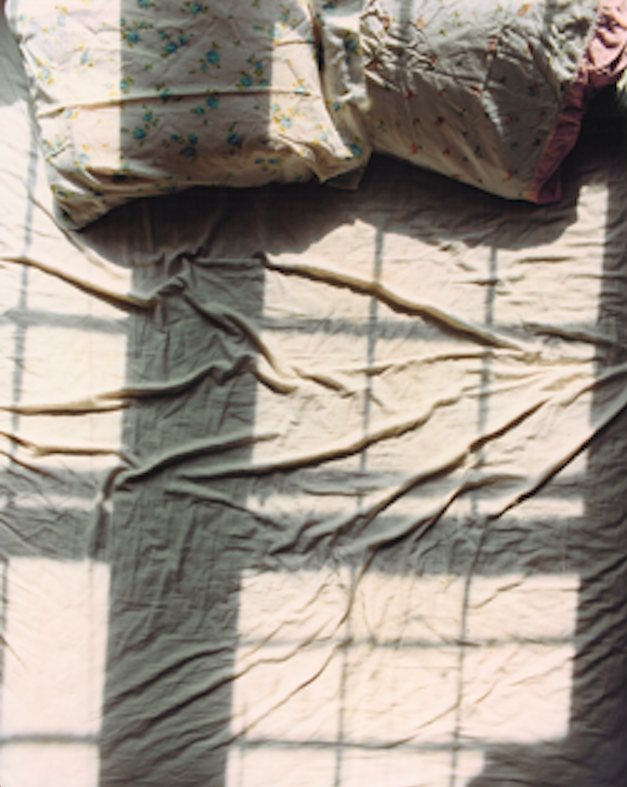
© » KADIST
Tammy Rae Carland
Carland’s series of large-format photographs Lesbian Beds (2002) depicts beds that have been recently vacated. Shot from directly above, they are lavish views of very private spaces. The artist plays to her viewers’ voyeuristic impulses, inviting us to look, but then denying us the opportunity to study the figures to whom the sheets belong, so that the rumpled covers become like anthropomorphic stand-ins inviting empathic projection.
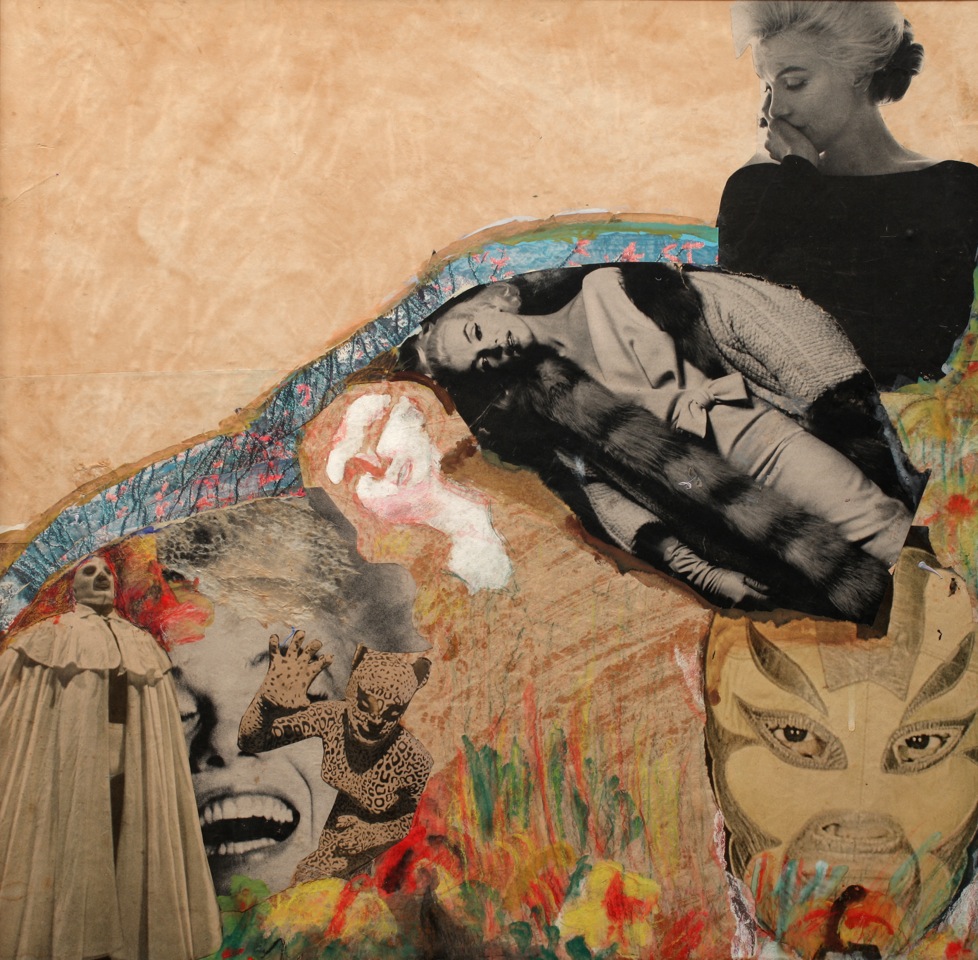
© » KADIST
Fran Herndon
Working independently, Herndon experimented at the forefront of a now-canonical method—appropriation—by painting additions into found images from magazines such as Life and Sports Illustrated in a way that imbues the resulting works with mythical significance. Associated with the Beat movement, her work is integral to that part of the history of San Francisco. White Angel (1962), painted in the year of Marilyn Monroe’s death, portrays the actress in a process of devolution.

© » KADIST
Trevor Paglen
NSA-Tapped Fiber Optic Cable Landing Site, Mastic Beach, New York, United States

© » KADIST
Colter Jacobsen
Victory at Sea is a simple mechanism made from cardboard and found materials that mimics the Phenakistoscope, an early cinematic apparatus. The piece requires the viewer to turn a wheel and look through a small hole in order to see a briefly animated succession of small drawings of sailors.

© » KADIST
Colter Jacobsen
Drawing & Print (Drawing & Print)
The title Untitled Passport II was first used by Felix Gonzalez-Torres in an unlimited edition of small booklets, each containing sequenced photographs of a soaring bird against an open sky. Stacked in the shape of a cube and available for visitors to take away, the passports did not offer citizenship, but rather invited participation in a sense of borderless “being.” Colter Jacobsen’s Untitled (Untitled Passport II) is a diptych showing two-page spreads from Gonzalez-Torres’s booklet. The perfect graphite renderings freeze the book with its pages splayed, wings perpetually open.

© » KADIST
Felipe Dulzaides
I Am Cuba— “Soy Cuba” in Spanish; “Ya Kuba” in Russian—is a Soviet/Cuban film produced in 1964 by director Mikhail Kalatozov at Mosfilm. The movie was not well received by the Russian or Cuban public and was almost completely forgotten until its rediscovery thirty years later by American filmmakers. The movie’s acrobatic tracking shots and idiosyncratic mise-en-scène prompted Hollywood directors like Martin Scorsese to campaign to restore the movie in the early 1990s.
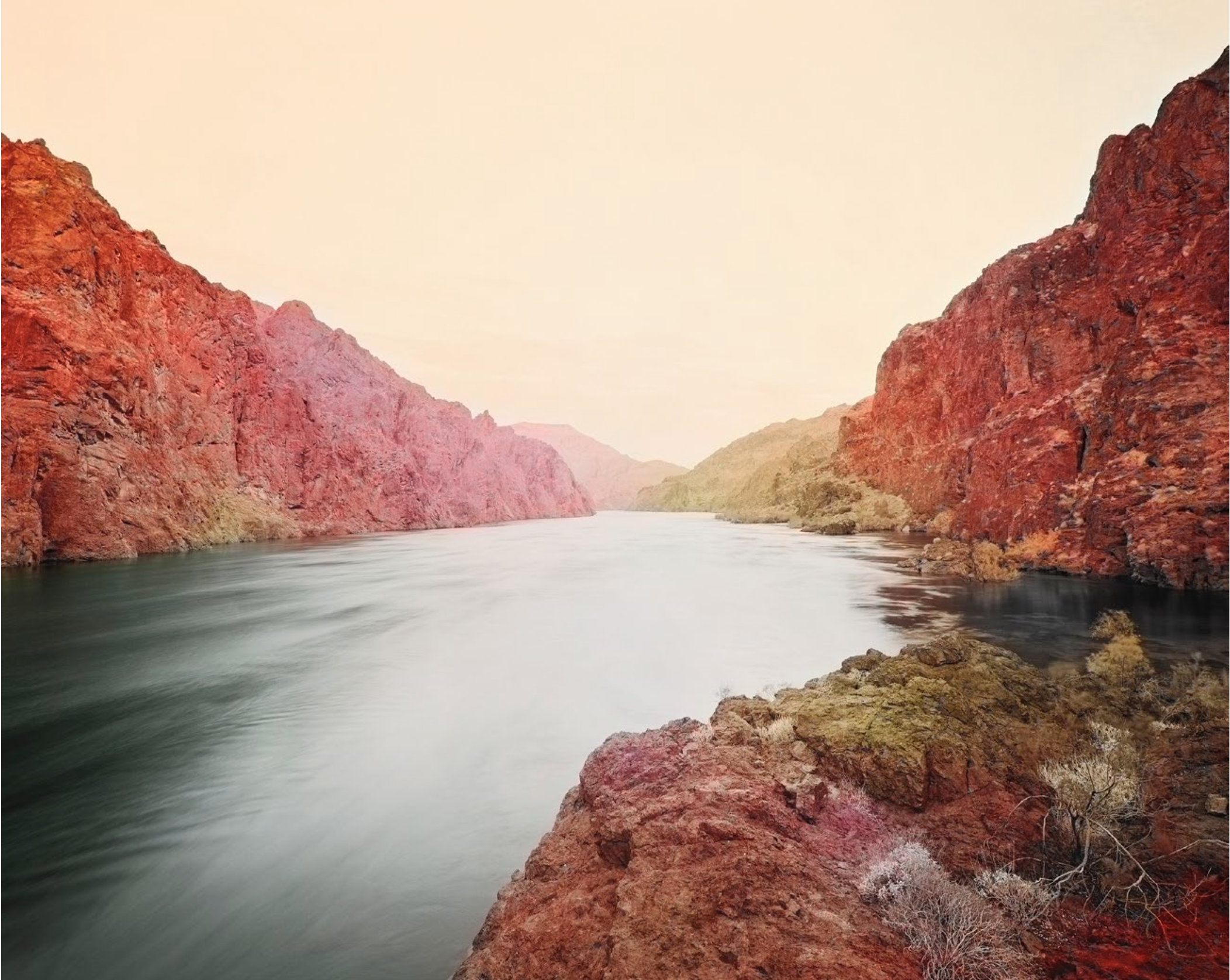
© » KADIST
Trevor Paglen
The Black Canyon Deep Semantic Image Segments by Trevor Paglen merges traditional American landscape photography (sometimes referred as ‘frontier photography’ for sites located in the American West) with artificial intelligence and other technological advances such as computer vision. In order to take this photograph, Paglen traveled to the Black Canyon, south of the Hoover Dam. Only accessible by water, Paglen piloted a boat up the Colorado river into the canyon.

© » KADIST
Lynn Hershman Leeson
Lynn Hershman Leeson’s genre-bending documentary Strange Culture tells the story of how one man’s personal tragedy turns into persecution by a paranoid, conservative, and overzealous government. Through interviews, scripted acting, and illustrations, Hershman Leeson outlines the series of absurd events that led to New York state’s case against the former SFAI Associate Professor and artist Steve Kurtz. By closely following Kurtz’s story, Hershman Leeson reveals a strange ripple effect of the Bush administration’s destructive policies.
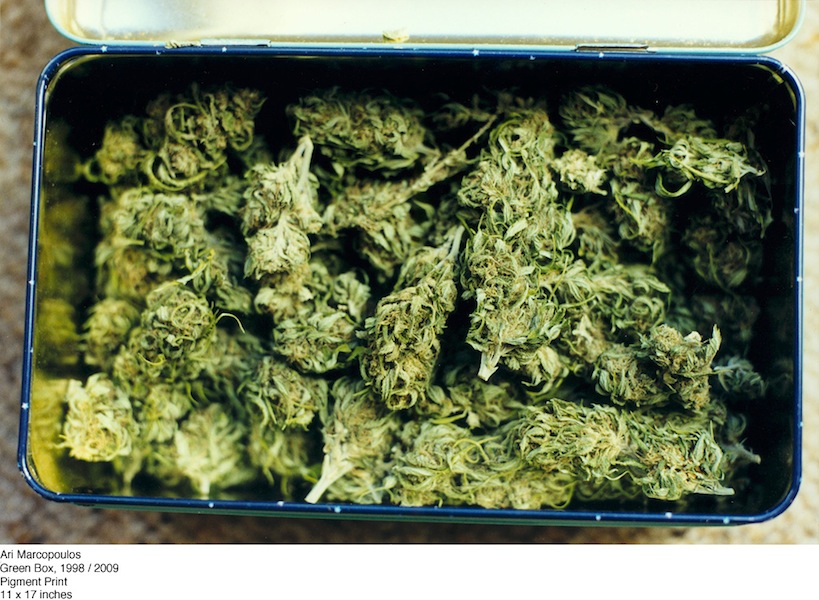
© » KADIST
Ari Marcopoulos
A photograph of a tin box full of marijuana simply titled Green Box, speaks to the constantly changing status of the substance–once taboo or illicit, now a symbol of a growing industry in Northern California. In the past a photograph of marijuana would more likely be found in an evidence file than an art museum or gallery, but today continued debates about the legality of marijuana and the industry surrounding it has brought the substance into common public view. Green Box is a strong example of the current sociopolitical state of California and the grey areas that exist in legislature and at the same time illustrates the unavoidable commercialization of once underground cultures.

© » KADIST
Sergio De La Torre
This is not in Spanish looks at the ways in which the Chinese population in Mexico navigates the daily marginalization they encounter there. The neon translates as “this is not in Spanish,” making reference to both the famous Rene Magritte painting “Ceci n’est pas une pipe” as well as signs posted in the windows of Chinese establishments in Mexico.

© » KADIST
Lynn Hershman Leeson
Using the seminal 1958 film Vertigo as a launchpad, Lynn Hershman Leeson explores the blurred lines between fact and fantasy in VertiGhost , a film commissioned by the Fine Arts Museums in San Francisco. VertiGhost features the re-creation of select scenes from Vertigo (which takes place in San Francisco), documentation of the life of a painting by Amedeo Modigliani in the Legion of Honor’s collection that was enshrouded by questions of authenticity, as well as interviews—including with the original film’s star Kim Novak— about the construction of realities in life and art. By thoughtfully overlaying these conversations and events, Hershman Leeson distills complex conversations around identity and authenticity into concise insights in just over 12 minutes.

© » KADIST
Bruce Conner
In 1977, as an already-established artist best known for his films, Bruce Conner began to photograph punk rock shows at Mabuhay Gardens, a San Francisco club and music venue. 27 Punk Photos: 11. Dim Wanker: F Word, May, 1978 (1978) is representative of a series of photographs by Conner, whose subject became a fascination for the artist.

© » KADIST
Leslie Shows
Human Quarry is a large work on paper by Leslie Shows made of a combination of acrylic paint and collage. Both through its title and formally—through how the shapes in the composition resemble a mountain or natural formation—the piece relays us to a mineral quarry or a deep mining pit where materials are extracted. Interspersed among the block-like figures and rocky textures, we also see several human silhouettes, either cut-out, or as if they were whited out by a shining light, or lost in the shadows.

© » KADIST
Sergio De La Torre
Nuevo Dragon City is a reenactment of a historical event from 1927 in which six Chinese were either trapped or voluntarily hid themselves inside a building in northern Mexico. Working with this unsettled mystery, De La Torre’s video inquires into the historical and continuing tensions between Chinese and Mexicans. As such, Nuevo Dragon City depicts a symbolic act of self-entrapment in which six untrained actors of Chinese descent silently blockade themselves inside in an empty Tijuana storefront.

© » KADIST
Trevor Paglen
Half Dome Hough Transform by Trevor Paglen merges traditional American landscape photography (sometimes referred as ‘frontier photography’ for sites located in the American West) with artificial intelligence and other technological advances such as computer vision. This photograph was taken at Half Dome, a frequently visited granite rock formation in Yosemite National Park, California. For this work, Paglen created a digital file of the 8 x 10 inch photographic negative so that the artificial intelligence program can apply computer vision to evaluate the content of the image.
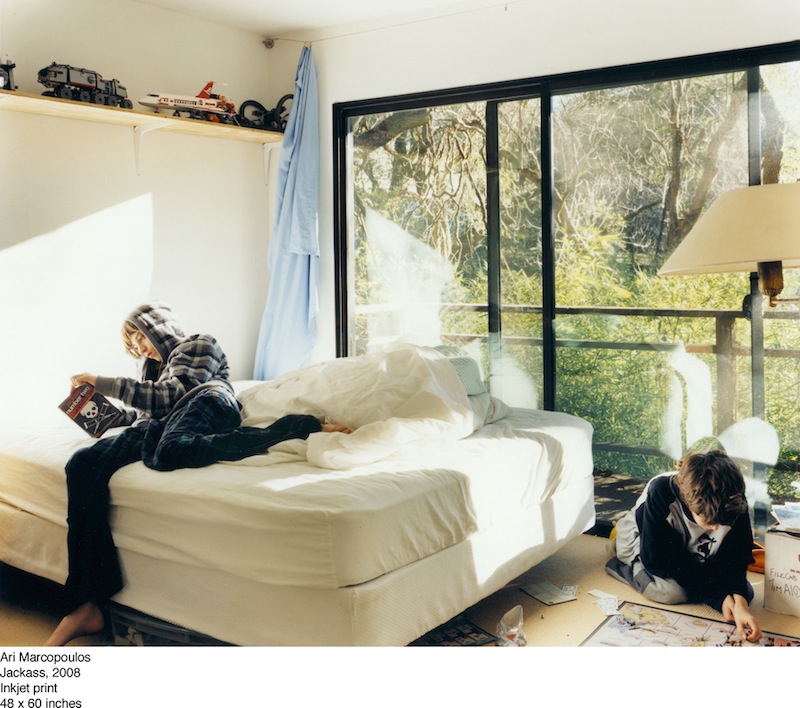
© » KADIST
Ari Marcopoulos
In Jackass (2008) by Ari Marcopoulos, his two sons, Cairo and Ethan, are pictured relaxing in a disheveled bedroom in their Sonoma home. One plays with some sort of board game while the other holds either a book or DVD of the movie Jackass Number Two, presumably the source of the photograph’s title. As Marcopoulos has continued to document his sons, and as they have become teenagers, the images of them begin to closely resemble the teenagers in much of his earlier work.

© » KADIST
Lynn Hershman Leeson
Hershman Leeson’s documentary, Women Art Revolution (W. A. R.) draws from hundreds of hours of intimate interviews with her contemporaries—visionary artists, historians, curators and critics—who recount their fight to break down the barriers facing women both in the art world and society at large. The film features an original score by Carrie Brownstein, formerly of the band Sleater-Kinney.
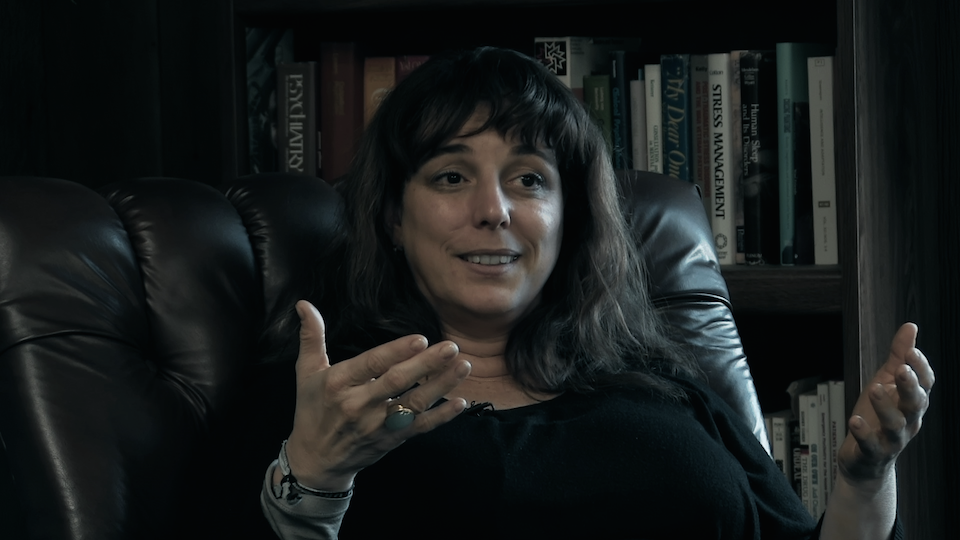
© » KADIST
Lynn Hershman Leeson
Tania Libre is a film by Lynn Hershman Leeson centered around renowned artist Tania Bruguera and her experience as a political artist and activist under the repressive government of her native Cuba. The film begins with the voice of Tilda Swinton narrating a manifesto of artists’ rights written by Bruguera in which she expresses her views on art, our universal right to both enjoy and create art, and the duty that artists have to dissent. The film then captures a series of therapy sessions between Bruguera and Dr. Frank M. Ochberg—the founding father of trauma therapy, particularly PTSD and Stockholm Syndrome—where Bruguera describes with great candor and earnestness several traumatic experiences such as the betrayal by her father who handed her to Cuban secret service, and her imprisonment in Havana years later after advocating for freedom of expression.

© » KADIST
Bruce Conner
Unlike many of his earlier films which often present poignant critiques of mass media and its deleterious effects on American culture, EASTER MORNING , Conner’s final video work before his death in 2008, constitutes a far more meditative filmic essay in which a limited amount of images turn into compelling, almost hypnotic visual experience. The video presents us with a reinterpretation of footage from his unreleased avant-garde film, Easter Morning Raga , from 1966. In contrast to his more famous pieces like A Movie (1958) and Crossroads (1976) which are juxtapositions of fragments from newsreels, soft-core pornography, and B movies, the images in EASTER MORNING serve as a reinterpretation of footage.

© » KADIST
Todd Hido
The two pieces in the Kadist Collection depict foggy landscapes, one at dawn, the other at nighttime. Both dimly lit scenes are dominated by an eerie feeling. Taken by a road, these painterly photographs suggest the uncanny character of the transient.
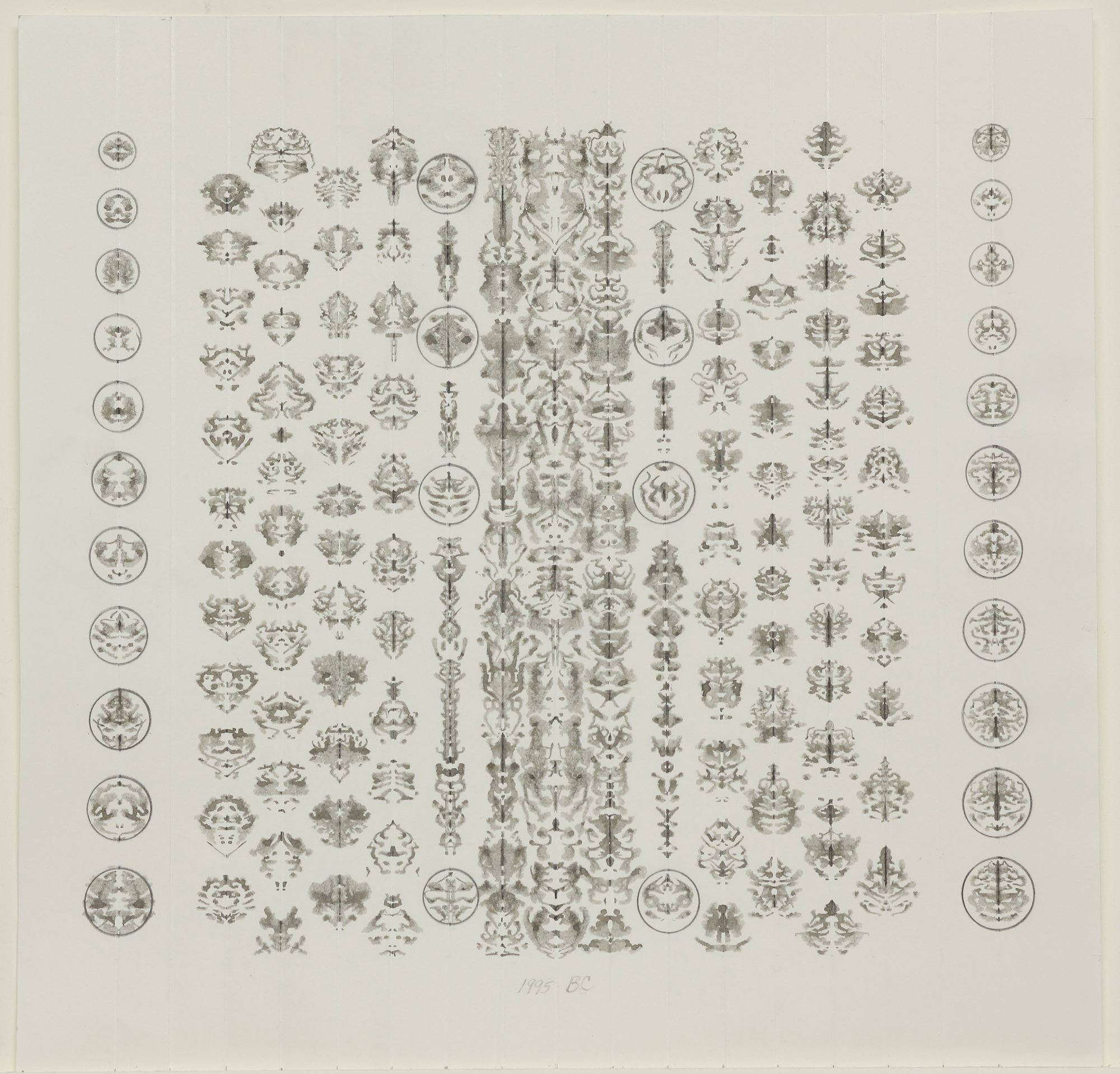
© » KADIST
Bruce Conner
Drawing & Print (Drawing & Print)
Bruce Conner is best known for his experimental films, but throughout his career he also worked with pen, ink, and paper to create drawings ranging from psychedelic patterns to repetitious inkblot compositions. Untitled Inkblot Drawing (CT-1491) (1995) is representative of his aspect of his practice. It is a formal exploration related to many different things: the Rorschach inkblot testing used by psychologists, Japanese calligraphy, Egyptian hieroglyphs, and the intricate patterning Conner saw everywhere in the world around him.
Trevor Paglen
Trevor Paglen’s work combines the knowledge-base of artist, geographer and activist...
Lynn Hershman Leeson
- location: San Francisco, California
- year born: 1941
- gender: female
- nationality: American
- home town: Cleveland, Ohio
Bruce Conner
- location: San Francisco, California
- year born: 1933
- gender: male
- nationality: American
- home town: McPherson, Kansas
Colter Jacobsen
Since 2003, Colter Jacobsen has gained in visibility and importance in the Bay Area art scene...
Ari Marcopoulos
- location: New York, NY
- location: Sonoma, CA
- year born: 1957
- gender: male
- nationality: Dutch
- home town: Amsterdam, Netherlands
Sergio De La Torre
Sergio De La Torre has worked with and documented the manifold ways in which citizens reinvent themselves in the city they inhabit, as well as the site-specific strategies they deploy to move “in and out modernity.” De La Torre often collaborates with his subjects, resulting in both intimate and critical reflections on topics like housing, immigration, and labor...
Tammy Rae Carland
Using photography, text, and video, Tammy Rae Carland tactically realigns traditional ideas of love, partnership, domesticity, and family...
Todd Hido
- location: San Francisco, California
- year born: 1968
- gender: male
- nationality: American
- home town: Kent, Ohio
George Kuchar
George Kuchar was a key figure in experimental and independent filmmaking in the Bay Area and more broadly across America...
Lutz Bacher
In a career spanning more than four decades, Lutz Bacher (born 1952, lives in New York) has built a highly heterogeneous oeuvre that defies classification...
Amy Balkin
Based in San Francisco, Amy Balkin’s various long-term projects respond to society’s relationship to the land, the atmosphere, the ocean and other natural resources, and how these resources have been used and valued...
Felipe Dulzaides
Felipe Dulzaides studied drama at the Instituto Superior de Arte of Havana and received a MFA in New Genres from the San Francisco Art Institute...
Leslie Shows
- location: San Francisco, California
- year born: 1977
- gender: female
- nationality: American
Fran Herndon
Fran Herndon was born in Oklahoma in 1929, then moved to San Francisco in 1957, where she came into contact with Jack Spicer, who encouraged her painting practice by motivating her to study at the California School of Fine Arts (now the San Francisco Art Institute)...
-
1960-1969
Fran Herndon
1962Working independently, Herndon experimented at the forefront of a now-canonical method—appropriation—by painting additions into found images from magazines such as Life and Sports Illustrated in a way that imbues the resulting works with mythical significance...
-
1970-1979
Bruce Conner
1978In 1977, as an already-established artist best known for his films, Bruce Conner began to photograph punk rock shows at Mabuhay Gardens, a San Francisco club and music venue...
-
1990-1999
Bruce Conner
Drawing & Print
1995(Drawing & Print) Bruce Conner is best known for his experimental films, but throughout his career he also worked with pen, ink, and paper to create drawings ranging from psychedelic patterns to repetitious inkblot compositions...
Ari Marcopoulos
1998A photograph of a tin box full of marijuana simply titled Green Box, speaks to the constantly changing status of the substance–once taboo or illicit, now a symbol of a growing industry in Northern California...
-
2000-2009
Tammy Rae Carland
2002Carland’s series of large-format photographs Lesbian Beds (2002) depicts beds that have been recently vacated...
Felipe Dulzaides
2006I Am Cuba— “Soy Cuba” in Spanish; “Ya Kuba” in Russian—is a Soviet/Cuban film produced in 1964 by director Mikhail Kalatozov at Mosfilm...
Colter Jacobsen
2007Victory at Sea is a simple mechanism made from cardboard and found materials that mimics the Phenakistoscope, an early cinematic apparatus...
Lynn Hershman Leeson
2007Lynn Hershman Leeson’s genre-bending documentary Strange Culture tells the story of how one man’s personal tragedy turns into persecution by a paranoid, conservative, and overzealous government...
Sergio De La Torre
2008Nuevo Dragon City is a reenactment of a historical event from 1927 in which six Chinese were either trapped or voluntarily hid themselves inside a building in northern Mexico...
Ari Marcopoulos
2008In Jackass (2008) by Ari Marcopoulos, his two sons, Cairo and Ethan, are pictured relaxing in a disheveled bedroom in their Sonoma home...
Bruce Conner
2008Unlike many of his earlier films which often present poignant critiques of mass media and its deleterious effects on American culture, EASTER MORNING , Conner’s final video work before his death in 2008, constitutes a far more meditative filmic essay in which a limited amount of images turn into compelling, almost hypnotic visual experience...
George Kuchar
2009Burrito Bay is a video by George Kuchar that follows the format of a diary or travelogue centered on a tropical trip to Acapulco, Mexico...
-
2010-2019
Colter Jacobsen
Drawing & Print
2010(Drawing & Print) The title Untitled Passport II was first used by Felix Gonzalez-Torres in an unlimited edition of small booklets, each containing sequenced photographs of a soaring bird against an open sky...
Sergio De La Torre
2011This is not in Spanish looks at the ways in which the Chinese population in Mexico navigates the daily marginalization they encounter there...
Amy Balkin
2012Data mining is a computer software process that can involve the neutral or benign analyzing of internet data for patterns, however, it can also imply the more sinister activities of surveillance or subject-based information gathering...
Lutz Bacher
2016Sweet Jesus is a sound installation by Lutz Bacher that consists of a found recording of James Earl Jones’ iconic voice reciting biblical genealogy from Matthew, Book 1...
Lynn Hershman Leeson
2016Tania Libre is a film by Lynn Hershman Leeson centered around renowned artist Tania Bruguera and her experience as a political artist and activist under the repressive government of her native Cuba...
Trevor Paglen
2017Trevor Paglen’s ongoing research focuses on artificial intelligence and machine vision, i.e...
Lynn Hershman Leeson
2017Using the seminal 1958 film Vertigo as a launchpad, Lynn Hershman Leeson explores the blurred lines between fact and fantasy in VertiGhost , a film commissioned by the Fine Arts Museums in San Francisco...
-
2020-2029
Trevor Paglen
2020The Black Canyon Deep Semantic Image Segments by Trevor Paglen merges traditional American landscape photography (sometimes referred as ‘frontier photography’ for sites located in the American West) with artificial intelligence and other technological advances such as computer vision...
Trevor Paglen
2020Half Dome Hough Transform by Trevor Paglen merges traditional American landscape photography (sometimes referred as ‘frontier photography’ for sites located in the American West) with artificial intelligence and other technological advances such as computer vision...